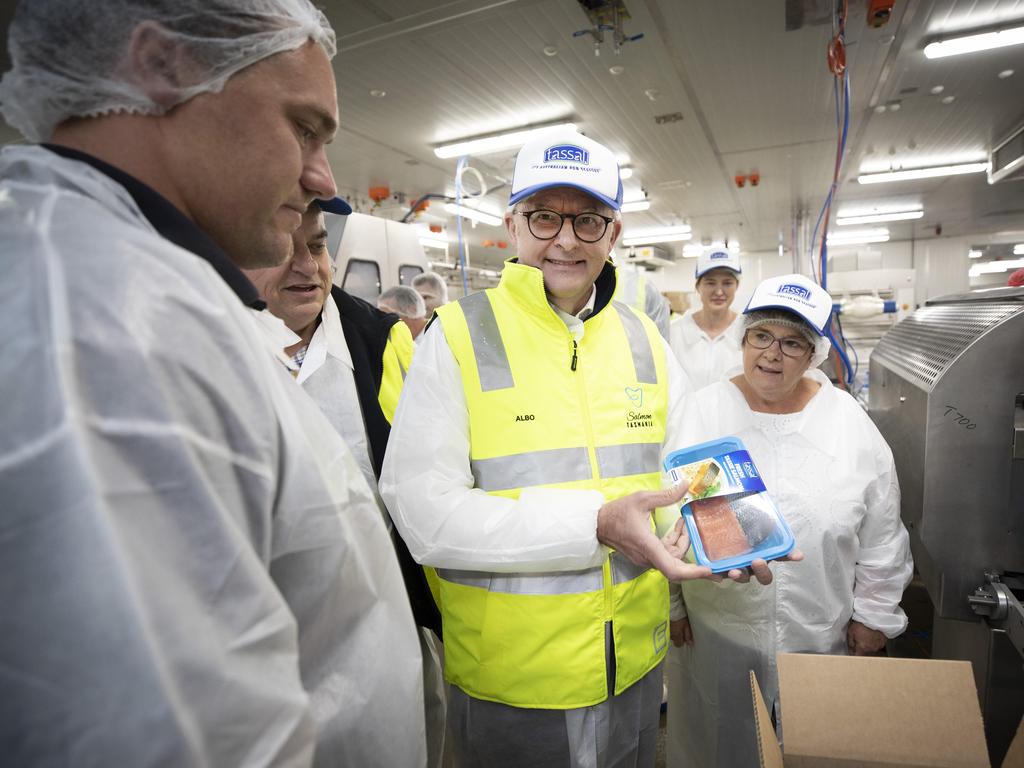ACCC must probe food giants on prices, says Allan Fels
Allan Fels says supermarkets are not transparent with customers, with once normal prices being advertised back to shoppers as ‘specials’.

Former competition tsar Allan Fels has called for a comprehensive ACCC inquiry into competition and prices in the retail food and grocery industry, backing the need for mandatory reporting of pricing structures and margins by supermarkets and processors.
In a letter to Jim Chalmers on Monday, Professor Fels set out key findings from his recent ACTU-sponsored inquiry into price gouging, including measures to increase transparency across the supply chain.
He found market power was exercised over farmers and many other suppliers, with the resultant gain in profits not passed on – certainly not promptly or fully – to consumers.
Professor Fels said supermarkets had not been transparent with customers about price histories of their displayed items and their correlated discounts, with once-normal prices being advertised to shoppers as “specials”.
He cited evidence about how, despite lamb prices falling for six months, Woolworths promoted a decrease in its lamb prices as a “Christmas gift”.
“Plainly, when those at the top of the supply chain experience an upward price shock, they raise the prices like rockets; when the reverse occurs, they fall like feathers,” an excerpt of his report says.
“The upshot of this dynamic is that consumer surplus is eroded, prices stay higher for longer and the task of monetary and fiscal policymakers to control inflation is that much harder.”
While welcoming the appointment of former trade minister Craig Emerson to conduct a review of the food and grocery code, Professor Fels said a voluntary code should be made mandatory.
Discussing market power over consumers, he said: “On the one hand, the major players have market power to hold down market prices, to exploit farmers and other suppliers. On the other hand, if they can profit from holding down input prices, a lack of competition on the product market side means reductions are not passed on to consumers. Instead, they are able to be pocketed.
“That downward price transmission is not fast is evidence of a lack of competitive forces in this sector.”
Recommending an Australian Competition and Consumer Commission inquiry into competition and prices in the retail food and grocery industry, he said there needed to be increased regulatory scrutiny and potential reform to address market concentration and ensure fairer competition in the food supply chain.
“This could involve strengthening anti-monopoly laws and implementing policies that support smaller farmers and encourage diversification of buyers in the market,” he said.
While misleading price displays were illegal, there was no prescribed minimum period where a business must advertise, he noted.
The extent of the obligation was that the item and a reasonable proportion of the items must have been sold at a price before businesses were able to claim it was a discount. “In a period of rapid price increases, it is many consumers’ evidence that businesses have not been fairly claiming to be discounting,” he said.
“As prices are changing so rapidly and across so many product categories, without special resources from the ACCC to monitor price movements it is impossible for consumers to have confidence this law is being complied with.”
Professor Fels said high prices, including co-ordinated high prices, were not prohibited by competition law except where there was an unlawful communication or agreement between parties. “With that exception, duopolies are free to charge high prices. The ACCC has no powers to even investigate whether the prices are excessive unless the government requires it to do so.”
Unlike most of the retail sector, supermarkets benefited during and after the Covid-19 pandemic. Neither Coles nor Woolworths experienced declines in profit and revenue over the period as their main businesses were, rightfully, deemed essential services, he said.
“This … allowed businesses continuity and retained their position in the market. What has occurred since the pandemic, though, is an increase in margins in both Coles and Woolworths food and grocery segments.”








To join the conversation, please log in. Don't have an account? Register
Join the conversation, you are commenting as Logout